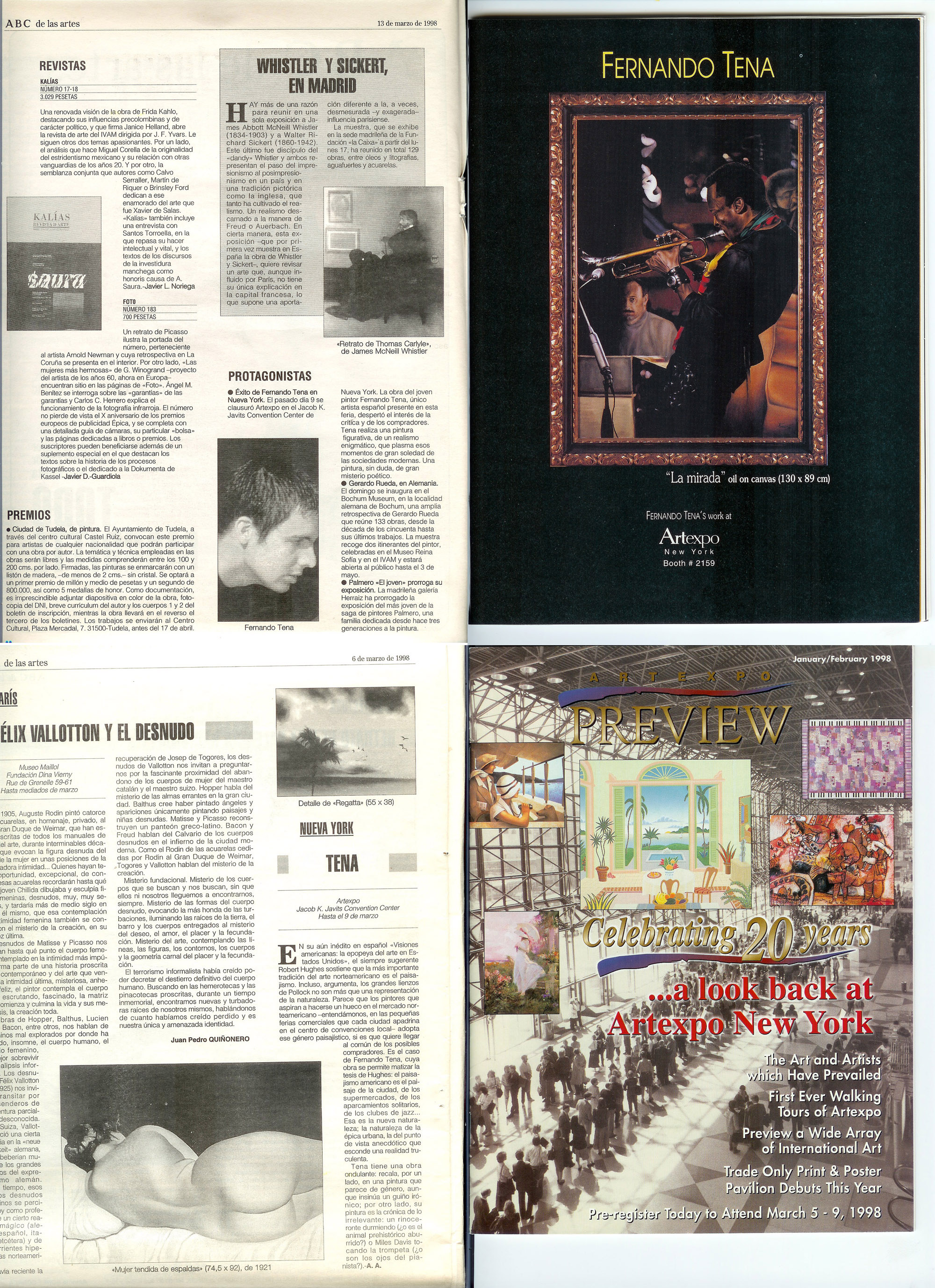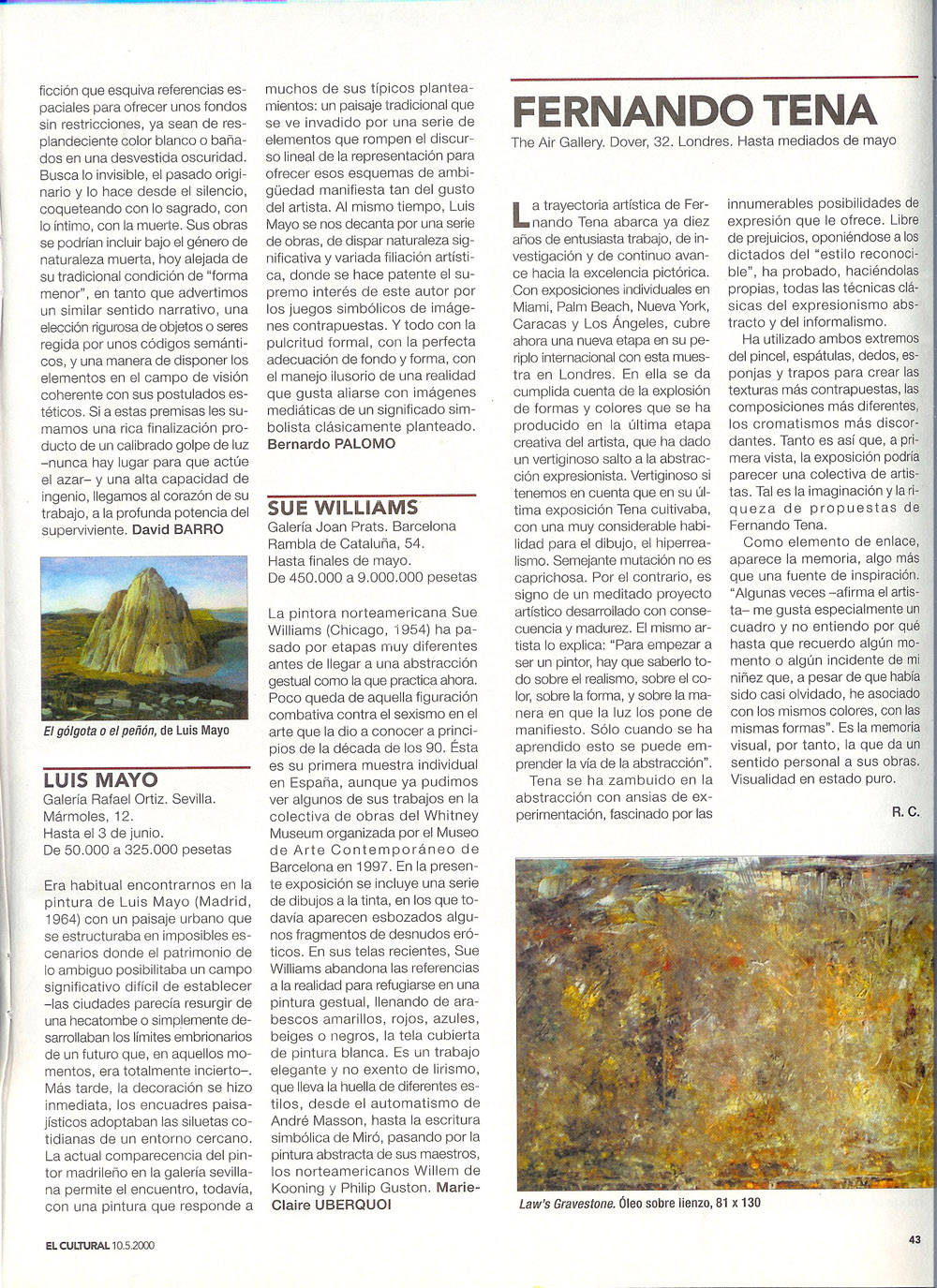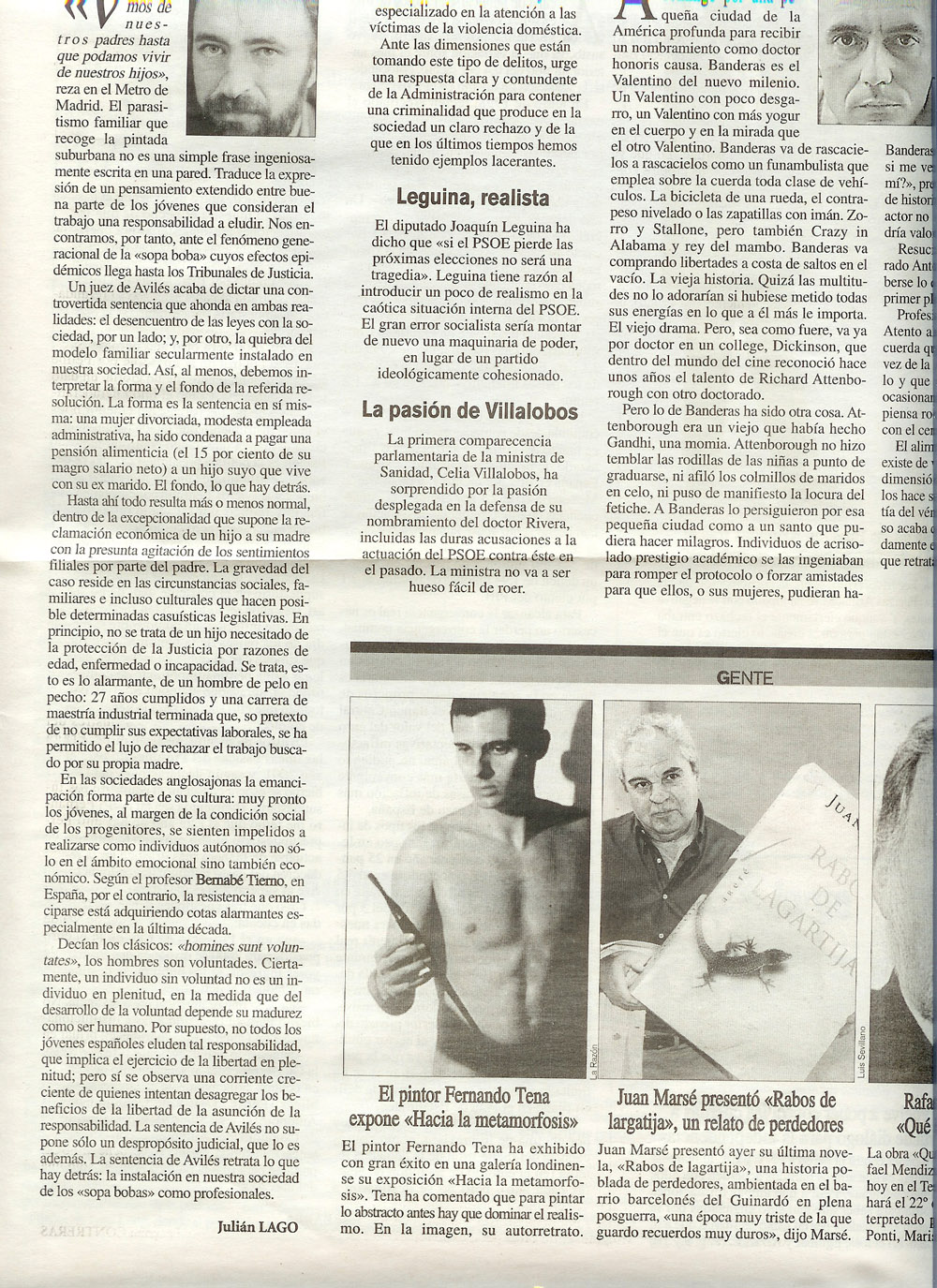about his work
Rachell Campbell-Johnston, Art Critic for 'The Times'
So what´s the first thing you think when you see an abstract painting ?
Help! usually. What the hell is it?
Away from the safe territory of the chocolate box lid, people often tend to panic a bit - and panic can make them bite. "Call that art," they snap. "A child could do that."
But could they?
Fernando Tena certainly doesn´t believe it. If there is anything childlike in his work, it comes from a long, slow process of trying to rid his adult mind of tricks of interpretation. And in doing so he tries to catch the directness of a child´s vision again fresh.
Tena is a self-taught painter. And this shows - not least in the range of subjets he has tackled over a decade long career. It is as though he has been experimenting with different interests and ideas, feeling his way towards.
His last show was hyper-realist in style. He cannot, therefore, stand accused, as an artist who can´t draw. "To began as a painter," he explains, "you have to know everything about realism, about colour and form and how light reveals them. Only when you have learnt this can you start out on abstract ."
Clearly, from this new show, he now feels himself ready. Here are canvases splashed and smeared and scumbled and scraped with only fleeting allusions to recognisable forms.
Tena appears to use both ends of the paintbrush, to use fingers and palette-knives, sponges and clothes to lay on the colour and give texture to his canvases. He borrows ideas from the masters of abstract, from Pollock, de Koonig, Kandinsky and Bomberg.
But for the viewer the real test of these paintings must be: do we work? Do they move, please or surprise at a level wich does not need a recognisable subject matter before it can respond? Which does not panic when it can´t interpret immediately?
Tena has delved into the realms of memory for inspiration. "Sometimes I like a painting particulary and I don´t understand why until I recall some moment or incident from my childhood which though half forgotten, I have associated with the same colours, the same forms."
But the viewer need not know the details of these memories to find enjoyment in the paintings - in fact better they do not. Better to let shapes and colours lead you down your own subconscious paths. For this is often the trick of liking the abstract. It is the art of letting go.
David Branovic
Artists that are able to depict the reality of a glance, or the anatomic essence of a woman or a man, let alone enable us to feel the tranquility of a landscape, are seldom encountered. These themes, that are recurrent in commercial art galleries, are rarely able to transmit the intensity of life or its essence like in the work of Fernando Tena.
With his exquisite and perfect technique, Tena easily indentifies himself with the universe of the immediate, becoming its primary exponent. He gives great importance to the transmission of a true reality - not merely a plain one - made up of images, moods and characters; making them his own, intimate and real, by working hard on the detail of his works. His interest for the "real", not for the almost photographic hyper-realism of other painters, allows Tena to capture the interior and the soul of the people; the air, the perfume and the beauty of nature, expressing them in his work through a perfectionist vision full of sensitivity and art. His paintigs, in fact, are live works of the most truthful expresion of our intimacy and our everyday life, thanks to the warm tones, the intincate composition and the masterful use of light.
In its sensible realism - that as such escapes from the virtuosity and the manierism of hyper-realism- the work of Tena proves itself full of maturity, skill, meticulousness, and above all, Art.
Even though he is far from classic hyper-realism, his accurate drawing line and the almost magic-like touch of his paintbrush define the sensitivity of forms following a concius track while always in control of tension and impulse. He builds shapes and figures accurately, capturing the character and the motion, going to its core and giving a hue to the grandeur of volumes and nature. The clear vision of Fernando Tena, expressed through his paintings, gives us the accurate edge, the will power, and the intense feeling of man and his world which thanks to Tena´s work, we are able to grasp with more ease.
If the elaboration ot the paintings is tense and accurate, the colour in them becomes the utmost expession of a perfect chromatic orchestration of diffused shades produces a sensation of breathing the intimate. The colour in the work of Tena gives us a truthful interpretation of shapes and events with a vision of the "real" and intimate, as a result of an intense process of rationalization, and of a selection of the "truly real", which is never what meets the eye.
The constructive sensibility, thus the capacity to succesfully arrange the space in his paintings, constitutes another important characteristic of his mastery. Tena´s knowledge of the optical and mathematical faculties of perspective, helps reaffirm a structural meaning when he depicts architectural scenes. This ability to compensate the vivacity of what is represented following rigorous architectural rules, recalls the rigorous system of architectural structure and geometrical design of the Hollandaise "genre".
Finally, all those figures, landscapes, rhythms and spaces that are depicted in his work are comprehensible as a whole under the logic of illumination. The light in Tena´s painting gives the picture a sense of totality. The displacement of the points of light ( breaking of the backgrounds, direct exposure in the middle plane and foreground ) as the definition of an evolving luminic atmosphere, play the essential role of integration, while they enrich the expressive contents of the image. Thus the light in Fernando Tena´s painting is engaged to his awareness, his commitment to being an artist, his will to create art.
José Manuel Mora Fandos. Doctor in English Philology, Fundación Mainel
A self. made painter, Fernando Tena has developed his mastery from hyperrealist figurative paintings - through urban landscapes, interiors and ambients - to informalistic oriented abstract works. Abandoning explicit figures has constituted to him - like many other artists- a jump into the strictly materic language, which invites the spectator to stare at these manifestations with simple eyes, a starting point from which one can immerse himself into personal associations.
In 'the Thought', paint itself seems to have been deposited as a material process completely detached form the artist; but soon this first impression is changed and balanced, as a more attentive analysis reveals different composition elements and chromatic harmonies which show a delicate ponderation in plastic elections. All of these produce a precise, intented sensorial effect.
Tena is pure, raw talent: a rare diamond that polishes and refines itself through the observation of the world and the perpetual processs of exorcizing the beauty out of (extra)ordinary things.
'...to capture the spirit, the essence of things; whether it is a portrait, a landscape, a moment, a theory or a simple idea, you must always be true to its core
Style & Quality
Fernando Tena. Born in 1976, Madrid, Spain. Self-taught painter.
At the tender age of seven years-old, he shows a clear passion for painting and begins to develop his artistic skills in Larchmont, New York.
At fifteen, he paints his first commissioned portrait; at eighteen, he puts on his first art exhibition in Miami, followed by.
- Art Americas, Miami, USA (1996)
- Art Expo, Palm Beach, USA (1997)
- Jacovits Center, New York, USA (1998)
- Galería Iberoamericana del Arte Contemporáneo, Caracas, Venezuela (1988)
- Jacovits Center, New York, USA (1999)
- International Artexpo, Los Angeles, USA (1999)
- Air Gallery, Londres, (2001)
- H. George V, Paris (2001)
- Gallery Cok St, Londres (2001)
- Museo de la Ciudad, Madrid (2002)
In all his exhibitions he got great success among critic and public..
Tena's works have the unusual quality of capturing the soul of whatever things are in them depicted. He has an extraordinary talent for catching what it is real in things, and in many ways his pAintings are more true to reality than reality itself.












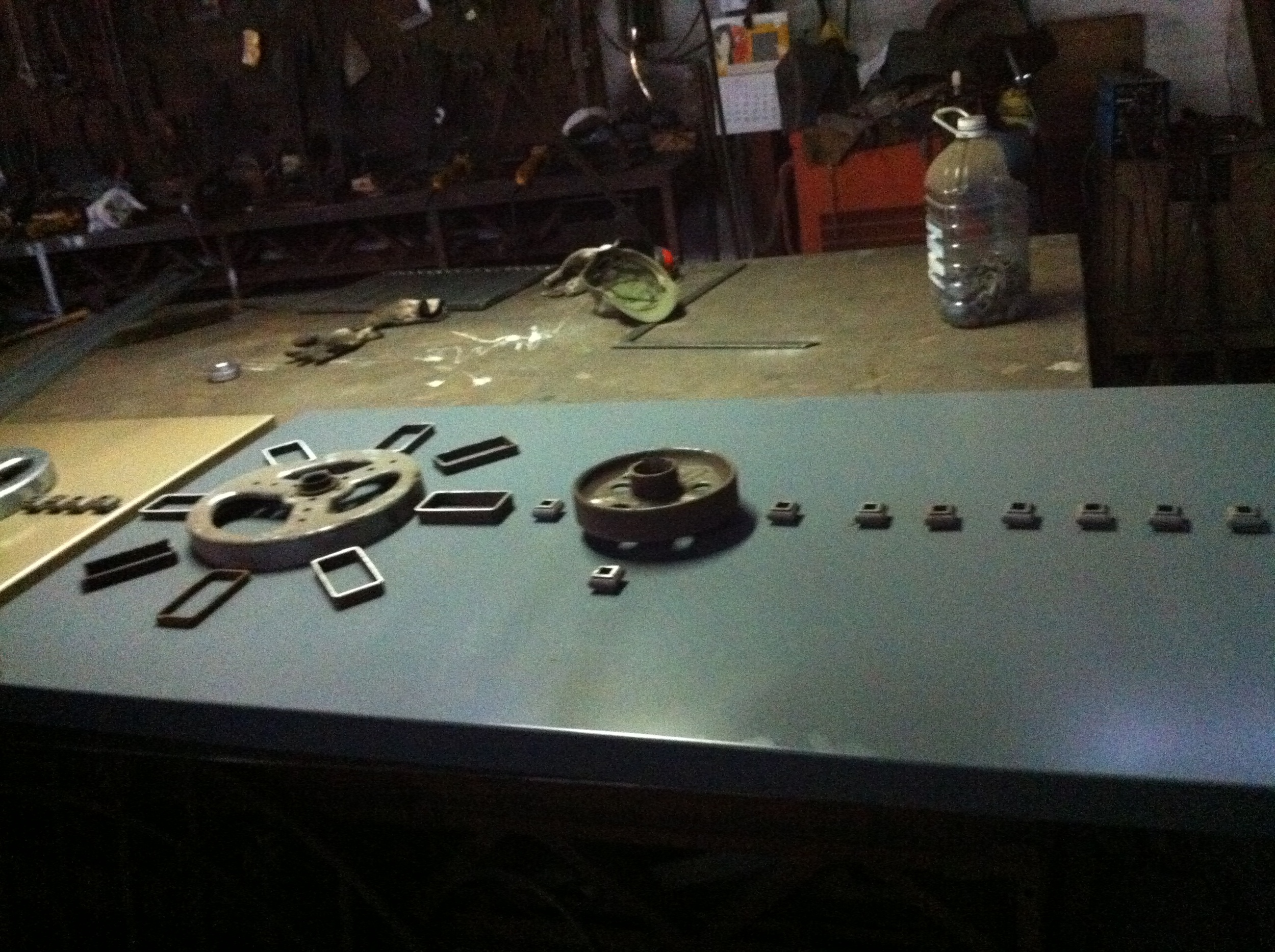
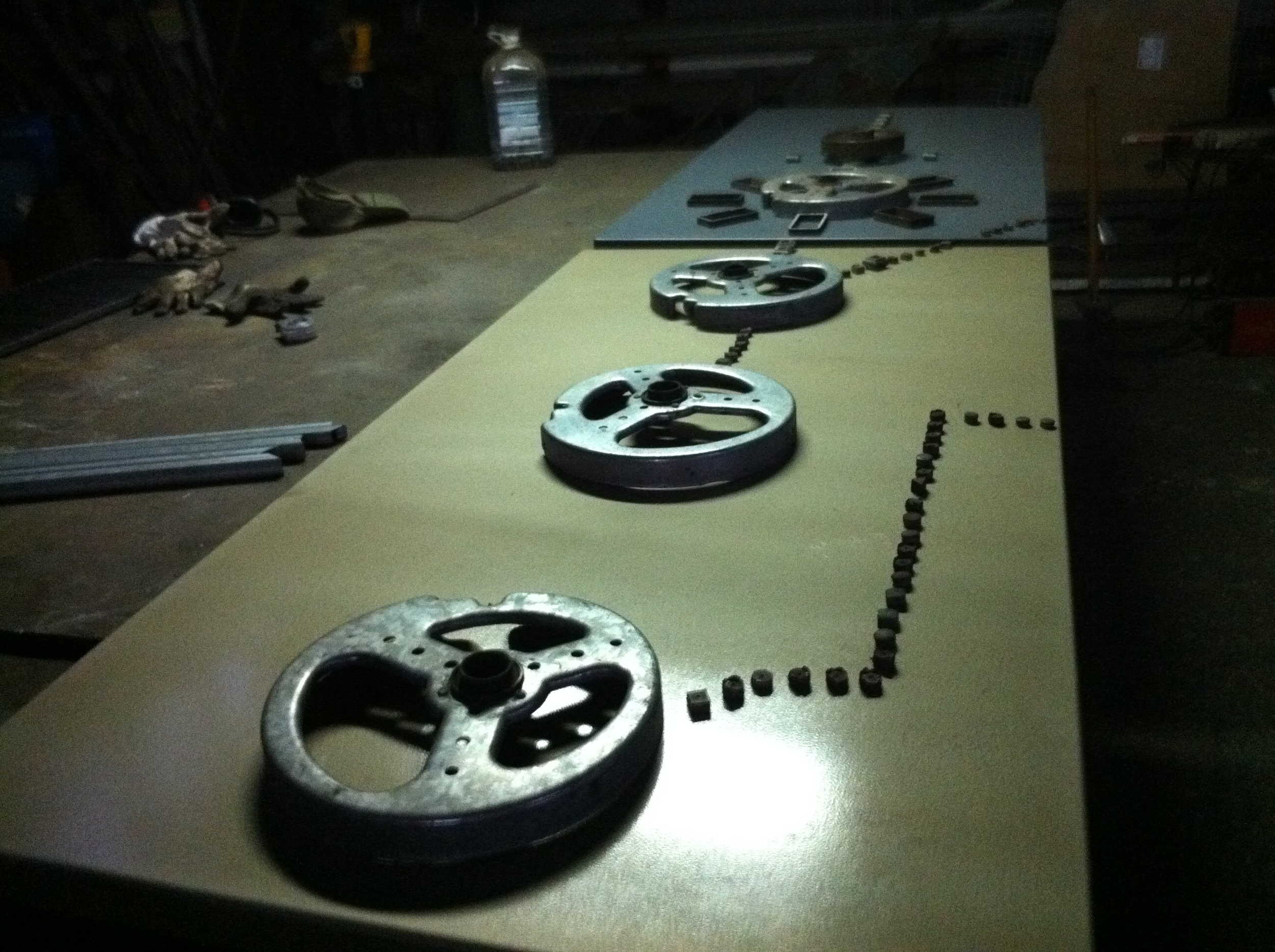
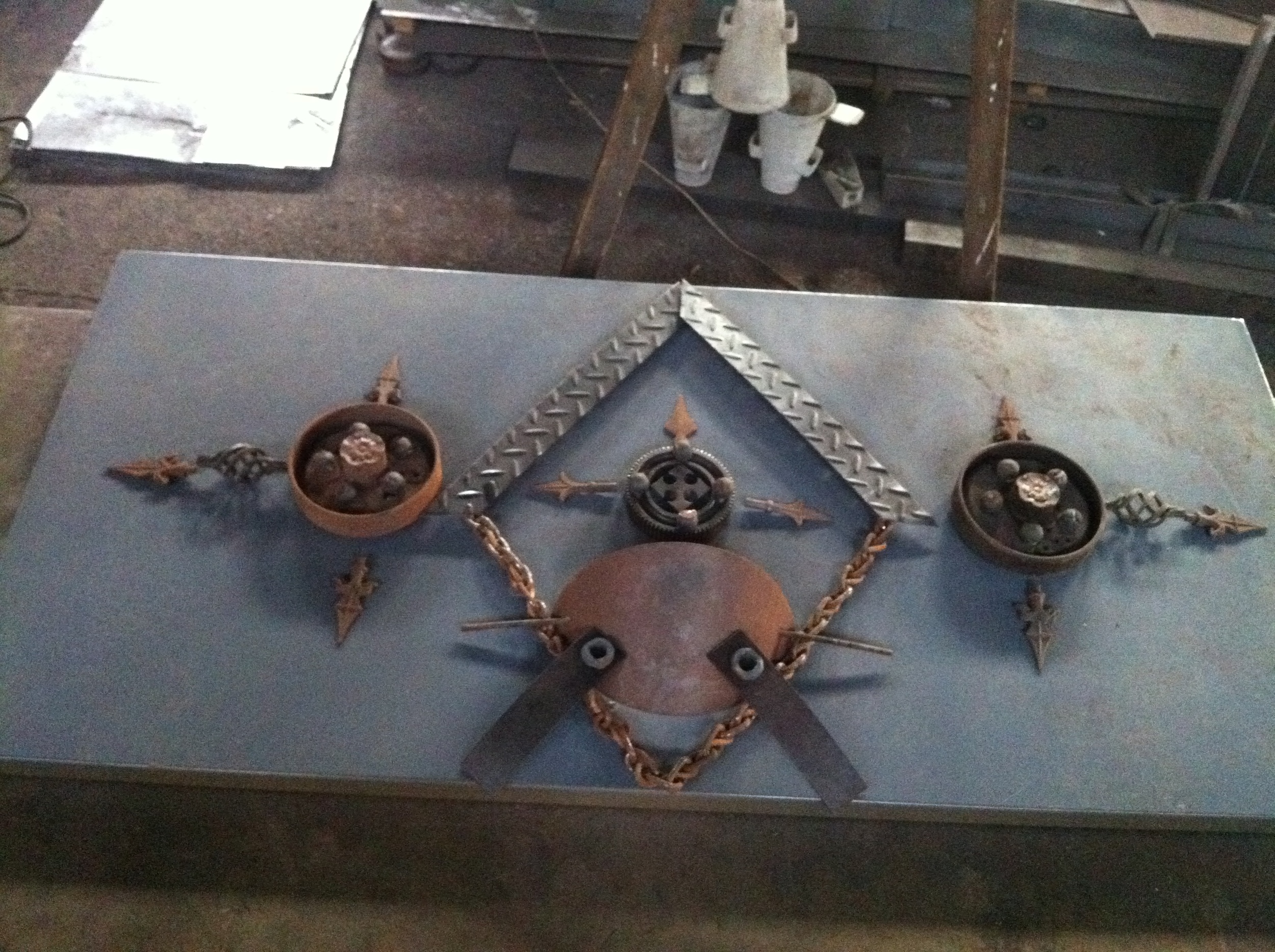
His talent for color and depth is unmatched and his work always stand out of any other: they immediately become the center of attention.
LUXOS magazine
In order to talk about Fernando Tena and his magical world i have to warm you first that his concept of art is not a traditional one. Art, for his young artist from Madrid based in Mallorca, is all that triggers a strong emotion, positive or negative, but an emotion. Something that pushes you to think, think and think again.
Fernando Tena has three parallel but well defined pictorial worlds and he moves between them harmoniously and calmly: the hyper realistic world, the semi-realistic and the abstract world. And what is more, he has a return ticket for all three.
His worlds are: anarchic, precise, chaotic, organized, luminous, dark, strong, erotic, wild, religious, mathematical, colourful or intimate, but what is magical about them is that anyone who is willing to take a look can understand. This is the magic, you don´t need anything else, any explanations, because this painter dominates all the techniques, all the materials, all the white canvases, everything. His spaces fill up because his worlds are worlds of art.
Fernando's pictorial conception Tena has gone evolving from 1996 where he explained: " The sigth is a facultly, seeing is an art", he understood this reality in the following way:
SIGTH IS A FACULTY, SEEING IS AN ART:
WORLDS OF ART
The comprehension of picturesque art, is a result of an " art" genre and specific differentiation of the " picturesque". Accepting this axiom, we are now ready to explore it further:
One one hand, "art" is the combination of processes with which reason gratifies different human needs: practical reasoning satisfies ones basic needs of substenance , poetic resoning satisfies sentient needs and scientific reasoning satisfies intellectual needs.
On the other hand, "picturesque" are those qualities of colour and shape of accessible objects to the sentient knowledge ( in this case- vision).
Therefore, as a synthesis of the two aforementioned proposals, we can come to the conclusion of definig "picturesque art" as a combination of rational processes, with which poetic reasoning satisfies the needs of sentient knowledge referring to a combination of colours and shapes.
However, the problem of understanding becomes resolved under this definition, although correct, still requires further clarification. What do we understan by satisfaction? What is the minimum, acceptable level for the creation of picturesque art- and art in general?
In fact, the word "satisfaction" opens new ground to the eternal controversy of the objectivity and subjectivity.
It has already been revealed to us through different levels.
Evaluating this situation and accepting the unreachability of the higest form of euphoria- understanding this as an achivement of art- in a worldly plane, the use of an agreement is essential with which it is possible to achieve the best possible level, therefore resulting a changing choice of picturesque reality to which one attributes the maximum level with the passage of time.
With this application we do realise the presence of a single work of art on a worldy level, being able to change its being (esse) and essence through the time factor.
Anyway, i will limit myself to showing the effect of the picturesque cause.
Picturesque art CONSISTS in painting the reality, without stopping to analize the "reality" word, therefore how to paint that mentioned reality.
In order to paint the reality, the real essence of the beings with regard to the human being should be painted, since it is painted on behalf of the human being.
And what are those real essences of beings with regard to the human being from the point of view of picturesque art? They are those beings which the human being is accustomed to seeing, as the result of a determined illumination for subsequent recognition and distinction of other beins ( as a statement it is important to confirm that it is not necessary to choose the complete real essence of that being, since you can COMBINE them, thereby creating a new essence, but this combination is always formed by joining different real essences of beings ( the 3-D rule still remains, the imagination works in the same way) I.E.: the creation of Angel, extraterrestrials, dragons, etc.).
To form those real essences of the beings with regard to human being, the secret is in the use of colour (let me remind that we are still dealing with picturesque art). There are many colours for one single essence, and it is almost impossible to combine one with the rest to obtain a perfect volume and substantial form that fits in with that real essence of the aforementioned being.
WHY MUST IT BE SAID; IN EACH EYE THERE IS ONLY ONE COLOUR, IT IS THAT WHICH IS DISPLAYED TO ME WHEN ITS IMAGE IS PRODUCED ABOVE THE YELLOW MARK ON MY RETINA?
Therefore, there exist an infinity of different forms of appreciting a picturesque work of art, in line with its different ways of illumination, which produces variation of colour thefore of the image. But, it is only shown in the correct way when we observe these real essence of beings( very few people achive to find only one correct way of illumination).


